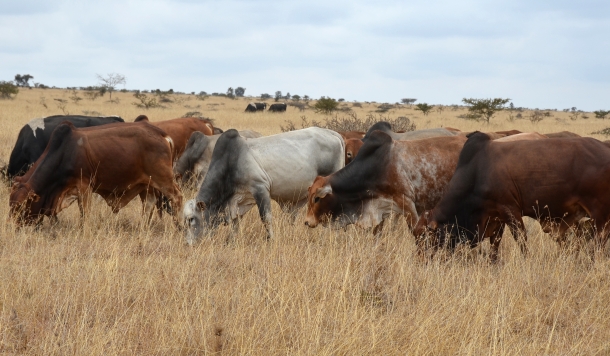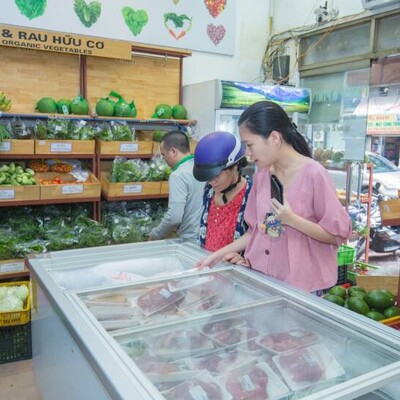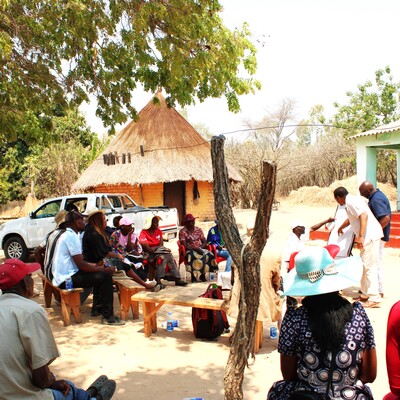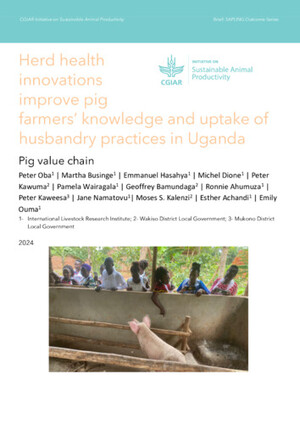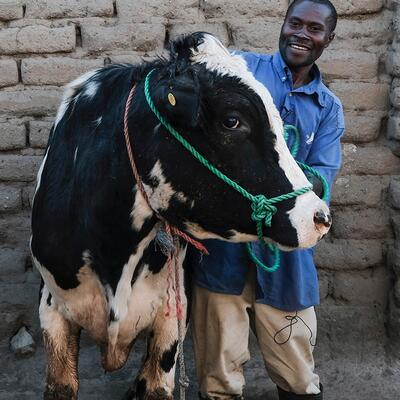
Kenyan livestock sector to grow ‘exponentially’—Kenya National Bureau of Statistics
Cattle grazing at ILRI’s Kapiti Ranch Research Station, outside Nairobi, in Kenya (photo credit: ILRI/Paul Karaimu).
Kenya’s livestock sector is primed to grow exponentially over the next three decades and anchor the country’s food sufficiency amid a rapid rise in the human population, a new survey showed.
‘Official estimates by the Kenya National Bureau of Statistics (KNBS) show that the human population presently stands at 47 million and is projected to grow to 96 million by 2050—pilling pressure on food supplies.
‘“In the next three decades, the country population is expected to double to 96 million and nearly 50 percent of the people to live in urban areas vis-à-vis 27 percent today.
‘”GDP (gross domestic product) per capita is projected to increase by over 140 percent by 2050,” UN agency Food and Agriculture Organisation (FAO) said in a report after a study in 21 counties.
‘As a consequence, the demand for animal-source foods will exponentially increase. In response to this demand, the livestock sector will deeply transform.’
Projections suggest that between 2015 and 2050, not only the cattle and chicken population will increase by 94 and 375 percent respectively but there will also be major productivity gains.
‘“By 2050 the livestock sector will supply an additional 7.8 million tonnes of milk, beef and chicken meat to the population, an increase of about 150 percent with respect to today,” FAO said.
‘It also has 26.7 million goats, 18.9 million sheep, 3.2 million camels, 44.6 million poultry, 1.9 million donkeys and 0.5 million pigs.
Cattle and poultry contribute about 70 percent to the total animal production, estimated at $1,622 billion as of 2016.
‘Beef is largely produced in arid and semi-arid areas (ASALs), where about 36 percent of the Kenya population live. Dairy production is concentrated in high potential agro-ecological zones where fodder and pastures are available.
‘The country has an estimated 43.8 million chicken contributing 5.1 percent of the livestock.
‘The poultry sector is highly heterogeneous and produces more than 35000 tonnes of meat and 1.6 billion eggs annually.
Per capita consumption or the average Kenyan’s consumption of livestock products is estimated at 16 kilogrammes of meat, 121 litres of milk and 45 eggs per person per year respectively.
Kenyans’ growing appetite for meat and dairy products saw the livestock sector turnover hit Sh146 billion in 2018 from Sh135.6 billion, supported by private and county value chains.
The fast-rising sector continued to attract formation of small-scale farmer co-operatives that increased by 105 or 20.2 percent from 518 to 623.
‘These are co-operatives that collect milk from farmers for onward direct sales to processors and raised deliveries by 18.4 percent from 535.7 million litres in 2017 to 634.3 million in 2018.
‘“Quantities of milk and cream processed increased by 10.6 percent from 410.6 million litres in 2017 to 454.1 million litres in 2018 while butter/ghee and cheese processing experienced a 10.8 percent and 15.5 percent growth, respectively, in 2018,” the Economic Survey 2019 said.
‘The KNBS survey shows 2.78 million cows were slaughtered, being 7.3 percent higher than 2017’s 2.59 million cows, which also saw 10.2 million sheep and goats slaughtered, an 11.3 percent rise from the 9.2 million sold to abattoirs in major towns.
‘A rise in pork eateries, especially in peri-urban areas as well as meat processing plants, pushed up pig sales 7.8 percent where 388,200 pigs were slaughtered up from 360,100 in 2017.
‘The performance by the cattle and poultry industry is expected to improve sharply by 2050 and cover for a projected rise in demand.
‘The FAO estimated that by 2050 the cattle population in Kenya will have increased by 90 percent while milk and beef production will rise to 17,000 tonnes and 2,000 tonnes, respectively.
‘The country’s chicken population is anticipated to rise to 178 million by 2050. . . .’
Read the whole article by Ambrey Omboki: Livestock key to Kenya’s food security, Business Daily (Kenya), 29 Jul 2019.
Read a related article on the growing global demand for meat: The way of more flesh—Global meat-eating is on the rise, bringing surprising benefits, The Economist, 4 May 2019.






